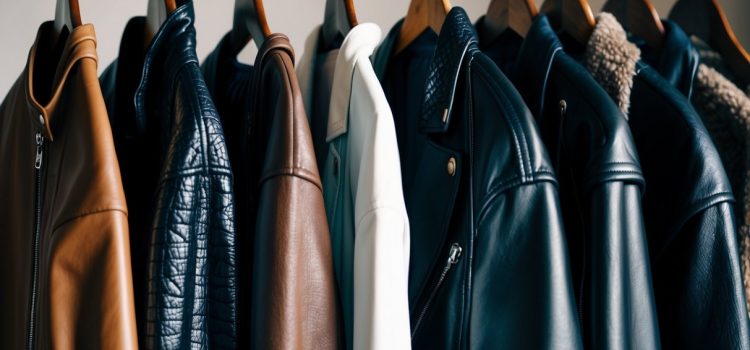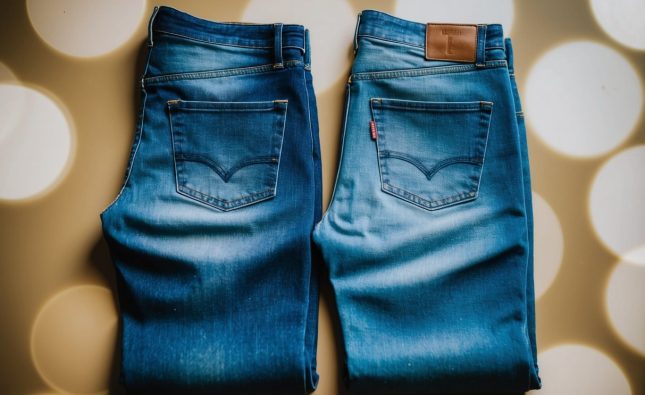
When choosing between leather and faux leather jackets, consumers often weigh various factors, including price, style, and sustainability. Faux leather offers a cruelty-free alternative while still providing a stylish look at a more accessible price point. On the other hand, genuine leather is renowned for its durability and timeless appeal, often aging gracefully with wear.

The debate extends beyond aesthetics and cost. Environmental impacts play a crucial role in this decision, with faux leather often regarded as a more eco-friendly option. Those interested in longevity and classic fashion might lean towards authentic leather, while others prioritize ethical considerations and fashion trends.
Ultimately, the choice between leather and faux leather jackets comes down to personal preference and values. Each option has its merits, catering to different lifestyles and fashion sensibilities. Understanding these aspects can facilitate a more informed decision for anyone in the market for a new jacket.
Materials and Durability

The choice between leather and faux leather jackets significantly depends on the materials used and their durability. Understanding the sources of leather and the composition of faux leather can provide insights into their lifespans and maintenance needs.
Leather Quality and Sources
Leather quality varies based on the animal source and the processing method. Common sources include cowhide, lambskin, and goatskin. Cowhide is the most durable, while lambskin offers a softer, luxurious feel.
The tanning process plays a vital role in determining leather’s durability. Vegetable-tanned leather is environmentally friendly and develops a unique patina over time. Chrome-tanned leather, more common in mass production, is softer and less expensive but may not age as gracefully.
Proper care extends the life of leather, requiring conditioning to maintain suppleness and protect against moisture.
Faux Leather Composition
Faux leather, also known as synthetic leather or vegan leather, is made from materials like polyurethane (PU) or polyvinyl chloride (PVC). PU is considered a higher quality, often resembling genuine leather closely and offering better breathability. Conversely, PVC tends to be stiffer and less flexible.
Using faux leather’s composition gives consumers a cruelty-free option without sacrificing style. It is lightweight and often less expensive than genuine leather. Nevertheless, its longevity can be shorter due to its susceptibility to cracking and peeling, especially with low-quality variants.
Durability Comparison
When comparing durability, genuine leather typically outlasts faux leather, often lasting several years with appropriate care. In contrast, faux leather can show wear and tear more quickly, especially if subjected to harsh conditions.
Leather can withstand various environmental factors, including temperature changes and moisture. Faux leather, while resistant to some degree, may not perform as well under extreme conditions.
Both types require care, but the approach differs. Leather needs conditioning, while faux leather benefits from quick wipes to prevent stains. Choosing between them ultimately depends on personal preference and lifestyle, but it’s clear that leather often provides greater durability over time.
Aesthetics and Comfort
The aesthetic qualities and comfort levels of leather and faux leather jackets can significantly influence a buyer’s decision. These factors include visual appeal, texture flexibility, and breathability, all of which are crucial in assessing which material aligns better with one’s personal style and comfort needs.
Visual Appeal
Leather jackets are often regarded as classic fashion staples. Their natural grain and unique patina give them a timeless look that ages well. Each piece has its own character, enhancing its appeal over time.
Faux leather has improved dramatically in visual aesthetics. Many modern versions mimic the appearance of real leather convincingly, with finishes that can be glossy or matte. Although it may not possess the same depth as genuine leather, it offers a sleek and polished look.
Texture and Flexibility
The texture of leather jackets feels rich and luxurious. They have a unique softness that develops with wear, providing a snug fit that enhances comfort. Leather is known for its durability and strength, making it a favorite among enthusiasts.
Faux leather often feels more rigid initially but can soften over time with use. Its flexibility varies by brand and quality, with some offering a more natural feel. The lack of natural imperfections in faux leather means a consistent texture, appealing to those who prefer a uniform look.
Breathability and Comfort
Leather jackets, while stylish, have varying levels of breathability. High-quality leather can offer some ventilation but may not be suitable for extreme heat. A well-maintained leather jacket can also conform to the body over time, improving comfort.
Faux leather typically provides less breathability. Many models are lined with fabric that enhances comfort but retains heat. This can lead to discomfort in warmer conditions, but it can provide additional warmth in cooler climates.
Environmental Impact and Ethics
The choice between leather and faux leather jackets raises important questions about animal welfare, environmental consequences, and available alternatives. Understanding these factors can guide consumers in making informed decisions.
Animal Welfare
Leather production involves the use of animal hides, primarily from cows, sheep, and pigs. This raises ethical concerns regarding animal treatment and slaughter practices. Many leather producers implement strict animal welfare codes, yet issues such as overcrowding and inhumane treatment persist in some facilities.
Conversely, faux leather is synthesized from synthetic materials, which eliminates direct harm to animals. Some consumers prefer faux leather for ethical reasons, aligning their purchasing habits with a more compassionate stance towards animal rights.
Environmental Footprint
The environmental impact of leather production includes deforestation for grazing and the use of harmful chemicals in tanning processes. These practices can lead to soil degradation, water contamination, and loss of biodiversity.
On the other hand, faux leather, typically made from polyurethane or PVC, has its own environmental challenges. The production of synthetic materials often involves significant fossil fuel consumption and emissions. Additionally, end-of-life disposal can contribute to plastic pollution.
Vegan Leather Alternatives
The rise of vegan leather alternatives offers a more sustainable option for those seeking animal-friendly materials. These alternatives can be made from various sources, including polyurethane, cork, and even innovative materials like pineapple leaves (Piñatex) or apple peels.
These vegan options aim to reduce the reliance on both animal products and traditional plastics. As technology advances, the quality and durability of these materials continue to improve, making them an appealing choice for environmentally-conscious consumers.












